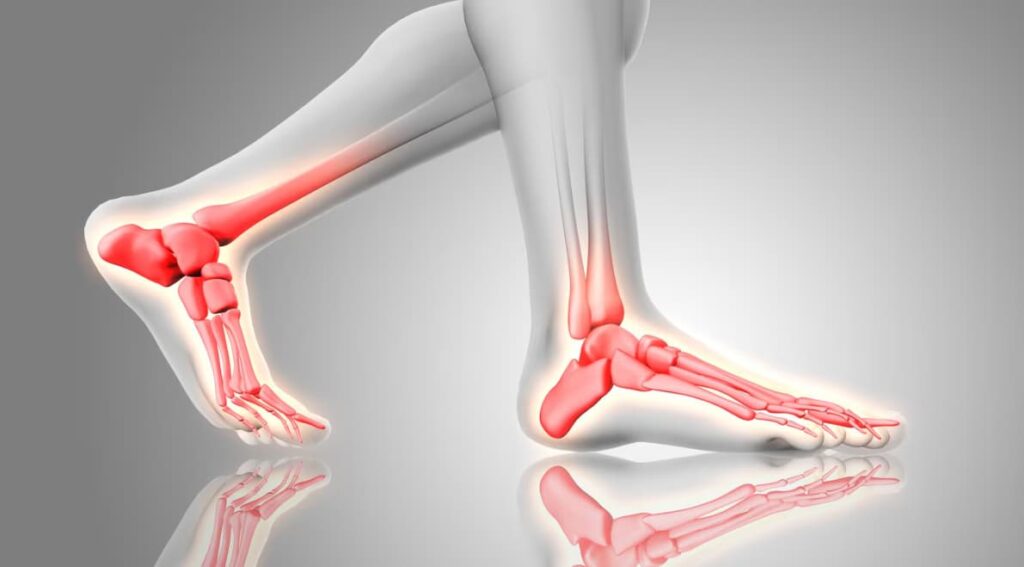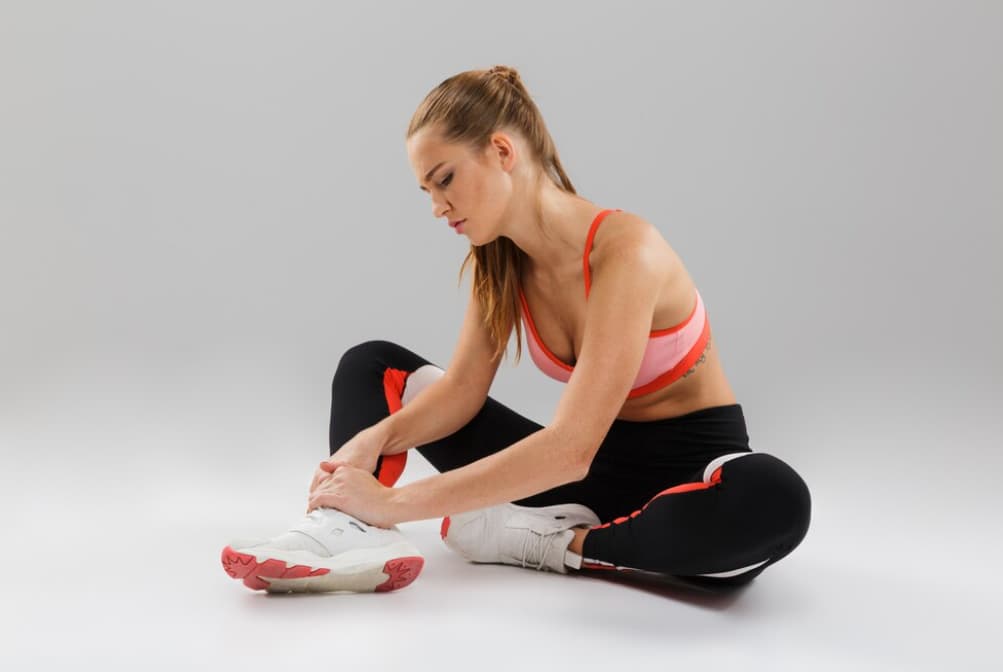Key Questions Addressed in this Article:
- What is ankle instability, and what are the common symptoms and indicators of this condition?;
- Why is proper rehabilitation crucial for the treatment of ankle sprains?;
- What are some guided exercises and regimens that can help improve ankle stability?;
- How do flexibility routines enhance ankle stability, and what specific exercises are recommended?;
- What role does aerobic training play in the rehabilitation of chronic ankle instability?;
- What are the strategies for enhancing ankle stability and preventing further injuries?;
- How important is it to consistently perform ankle strengthening and rehabilitation exercises?;
- Why should ankle pain be addressed promptly, and how can ignoring it lead to further complications?;
- What are the benefits of utilizing ankle support during physical activities?;
- When is it necessary to seek podiatric care for ankle injuries, and what can a podiatrist offer in terms of treatment?
Ankle instability, a condition often stemming from repeated ankle sprains, manifests through a propensity for the ankle to collapse during movement or regular activities. Characterized by a sensation of the ankle “giving way,” this condition can also present with pain as a secondary symptom. Typically, an unstable ankle may feel uncertain and precarious, heightening the risk of further sprains.
Learning how to fix chronic ankle instability is essential for maintaining foot health and stability. In a similar vein, addressing curled toes is also crucial for preventing discomfort and maintaining proper gait mechanics. You may also like to explore strategies for managing curled toes to ensure comprehensive foot care.
The Importance of Proper Rehabilitation for Ankle Sprains
An ankle sprain is the result of the joint being forced into an unnatural position, which can stretch or tear the connective ligaments. Such injuries can impair both the reflexes and strength of the affected joint. Without adequate rehabilitation, these deficits may lead to persistent instability.
Neglected sprains, where the ligaments heal improperly due to inadequate treatment, are a common precursor to ongoing ankle instability. Inadequately rehabilitated sprains can also lead to scar tissue accumulation, contributing to joint stiffness and chronic issues. Thus, it’s crucial to address ankle sprains with proper care and rehabilitation.
While acute ankle instability refers to a recent onset, chronic ankle instability denotes a gradual worsening of the condition over time.
Most instances of chronic instability can be effectively addressed with physical therapy, supportive bracing, and medication. Nonetheless, in extreme cases where conservative treatments fail, surgical intervention may be necessary to repair or rebuild compromised ligaments.
Typical Indicators of Ankle Instability

Individuals experiencing ankle instability might notice various signs, including:
- Sudden inward or outward turning of the ankle;
- An unpredictable ankle that collapses unexpectedly;
- Difficulty supporting weight on the impacted leg;
- Discomfort or persistent pain in the ankle area;
- Sensitivity to touch around the ankle;
- Inflammation or puffiness in the affected ankle.
Guided Regimen for Ankle Stability Improvement
Balanced Single-Leg Hold:
- Position yourself securely behind a chair, using it for support only if necessary;
- Elevate one foot, stabilizing yourself on the foot of the affected ankle;
- Maintain this stance, aiming to prolong the duration incrementally. Start with a ten-second hold on the initial day, increasing by ten seconds daily until a full minute is achieved;
- Perform two additional repetitions to finish a series of three.
Toe-Writing Exercise:
- While seated with both feet on the ground, extend the affected leg forward;
- Using your big toe as a pencil, ‘write’ each letter of the alphabet in the air from A to Z;
- Should discomfort arise, cease the activity; otherwise, complete 2-3 additional sequences.
Elevated Calf Strengthening:
- Locate a raised surface that allows your heels to drop below your toes and have a stable object within reach for support;
- Stand on the edge with feet apart at hip width, the front of your feet stable on the surface, heels extending past it;
- Gradually dip your heels below the toes’ level, using the support as needed;
- Pause in the lowered position for 2-3 seconds, then rise to level the feet with the toes;
- Execute ten repetitions for one complete set, rest, and aim for three full sets.
Flexibility Routines for Enhancing Ankle Stability

Foot Arch Pull with Towel:
- Position yourself seated on the floor, legs extended forward;
- Wrap a long towel around the front of both feet, grasping the ends with your hands, spine aligned;
- Gently draw the towel toward you, keeping your knees straight;
- When you feel a stretch through your foot’s arch, hold for 30 seconds;
- Relax and return to the initial posture;
- Perform two additional repetitions of this stretch.
Wall-Assisted Calf Stretch:
- Face a wall, extending your arms to place palms flat against it, keeping arms outstretched;
- Step one foot forward, slightly bending the knee;
- Extend the other foot back, heel grounded, leg straight;
- Feel the stretch in your calf muscle, maintaining for 30 seconds;
- Step back to the initial position;
- Complete two more repetitions of this stretch.
Ankle Mobility Rotation:
- Position a towel roll or foam roller on the floor;
- Sit with one leg extended, the other knee bent, and position the extended leg’s heel on the roller;
- Rotate your ankle in a clockwise direction for ten rotations;
- Switch direction, rotating your ankle anticlockwise for another ten rotations;
- Switch to the opposite leg and repeat;
- Do two more sets of rotations for each ankle.
Aerobic Training for Chronic Ankle Instability Rehabilitation
Incorporating aerobic exercise into rehabilitation regimens for chronic ankle instability can offer multifaceted benefits, aiding in both recovery and long-term management. These exercises not only target the ankle but also contribute to overall fitness and resilience. Nevertheless, it’s imperative to consult a healthcare provider to tailor the exercise regimen to your individual needs and ensure optimal outcomes.
Usually, a podiatrist, physical therapist, or doctor will suggest a low-impact exercise for rehab, like swimming or riding a stationary bike.
Strategies for Enhancing Ankle Stability and Avoiding Injuries
Consistently Perform Ankle Strengthening and Rehabilitation Exercises
Recovering from an ankle sprain typically involves a regimen of strengthening, balancing, and stretching exercises prescribed by healthcare professionals. A common misconception is that once the ankle feels better, these exercises are no longer necessary. However, adhering to these exercises beyond immediate recovery is crucial for maintaining ankle mobility and preventing complications such as instability. Continuous engagement in the prescribed rehabilitation exercises ensures long-term health and functionality of the ankle.
Address Ankle Pain Promptly
Ignoring any form of ankle pain can lead to further complications, particularly if the pain is associated with a recent injury. Acute ankle sprains, if left untreated, can result in additional ligament damage, complicating the healing and rehabilitation process and increasing the risk of ankle instability. Immediate consultation with a healthcare provider is essential for anyone experiencing sudden ankle pain due to an injury.
Utilize Ankle Support During Physical Activities
The use of ankle braces is a proactive approach to prevent ankle injuries, especially in high-impact sports that involve quick movements, such as hockey, soccer, and basketball. Ankle support, through braces or taping, provides stability and reduces the likelihood of awkward movements that could lead to sprains. Additionally, using ankle support can condition the body to avoid motions that increase the risk of injury.
Warm Up Adequately Before Engaging in Exercise
Preventing ankle sprains and injuries starts with a proper warm-up routine before any physical activity. Warming up increases muscle temperature and flexibility, reducing the stress on ligaments, tendons, and joints, thereby minimizing the risk of sprains. A warm-up should include light to moderate endurance activities, such as jogging, star jumps, or walking lunges, for 5-10 minutes to prepare the body for exercise and safeguard against ankle instability.
Understanding When to Seek Podiatric Care for Ankle Injuries
Podiatrists specialize in addressing medical issues related to the feet and lower limbs, including ankle instability. If you’re experiencing ankle problems, consulting a podiatrist is crucial for accurate diagnosis and effective treatment. Through a comprehensive physical examination, a podiatrist can confirm the presence of ankle instability and tailor a treatment plan suited to your specific condition. This typically involves a combination of bracing and physical therapy as part of a functional rehabilitation program.
Moreover, podiatrists can assess the severity of ankle instability and determine if surgical intervention is necessary. They conduct additional tests if needed and address any concerns or queries you may have about the proposed treatment.
Conclusion
Chronic ankle instability can impose significant challenges. However, a comprehensive and effective rehabilitation plan that includes not only targeted exercises and stretches but also a balanced diet, appropriate preventive measures, and mental well-being considerations can set you on the path to recovery. Always seek professional help when dealing with ankle injuries to ensure an accurate diagnosis and treatment plan.


